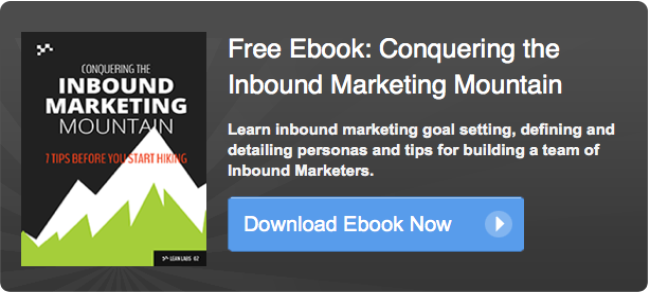Have you ever heard anyone say “I chose my bank because its website has cool banners”, or “I always buy from that business because of their explainer video?” My guess is “probably not.”
Let’s face it: customers don’t buy from websites because they “look” good. Despite this, business and design agencies sometimes obsess over beauty at the expense of ROI, resulting in great looking lipstick on a pig of a website. Design is only skin deep, true beauty lies within.
Does your great looking design really only serve to cover up some ugly warts? Let’s find out. Here are 7 Ugly Truths that even the prettiest website can’t hide:
1. It Doesn't Rank
Search Engine Visibility trumps beauty. Beyond the name of your company, search Google for the products and services you provide. If your website is off hiding in the woods, does it matter how pretty it is? For example, Bullet Proof Designs consistently achieves top-5 rankings for its three principle products: “radiator guards”, “swingarm guards”, and “disk guards.” Traffic makes any site more beautiful.
SEO Tips:
- Each page or post should target one keyword or keyphrase. Try to use this in a <h1> tag near the start of your page, and again as it fits your content throughout the article.
- Add meta data (title, keywords, description) to your page before you publish and include your keyword in image alt tags when they’re relevant.
- Use your networking skills to obtain inbound links to your content. Find relevant blogs and forums that are relevant to your page and ask them to link to you. When possible ask for inbound text links to include your targeted keyword.
2. Your Content Sucks
“Content is King” says William Henry "Bill" Gates III. Yep, he nailed it back in 1996.
The evidence is overwhelming that original, helpful, and sharable content wins business. If you are not engaged in content marketing, you are losing customers to competitors. Here are the facts:
- 329 million people read blogs every month. Are they reading your blog? [tweet this]
- 27 million pieces of content are shared daily. How many shares does your site get? [tweet this]
- 73% of customers prefer blogs and articles over advertisements. Are you marketing “your way” or “their way”? [tweet this]
- 61% of consumers are more likely to buy from companies that publish content than those that don’t. [tweet this]
- Clicks from shared content increases the chance of sale by 500%. How many shares are you getting? [tweet this]
- Over 80% of content shares are happening in email, social media, blogs, and forums. How well are you marketing in these channels? [tweet this]
(Source: Ditch Cold Calls. Why Content Is King. )
Content Tips:
- Start blogging yesterday and do it at least twice a week.
- Ask your salespeople and customer service the questions they regularly receive, and answer them in your blog.
- Read your blog post out loud before publishing. If you could say it face to face for a customer and be happy with parts being used as a quick clip on TV, it’s ready to publish.
3. Inadequate Marketing Platform
To build your traffic, leads, and sales, you need a platform that lets you publish content, build and test landing pages, nurture leads, and optimize conversion rates.
Time spent messing around with extra tools and complex configurations can double or triple the time it takes to execute good marketing. It can also complicate or hinder your ability to measure what’s working and determine what you should do next to improve results.
Is your platform allowing your site to generate and nurture leads? How does it aid in creating keyword and SEO research data? Does it offer solutions for managing your social media marketing?
Furthermore, can you manage direct customer Interactions? What about company processes and initiatives? Is there room to create and enable team collaboration within your platform?
Then, there is the question of can your platform mage email marketing and social listening? Can it help measure customer satisfaction? Does it allow you and your business to monitor marketing effectiveness?
If your platform cannot do or at least produce an answer to these questions, how will you know if your platform can truly help to test new ideas and track KPI’s? Ultimately, you need to ask if the platform is truly working the way it should be.
Platform Tips:
- The ability to build out an idea, test how it works, and then improve your idea is integral to modern marketing. Look for tools that can help you test ideas.
- Find a tool that works for you. If you spend more time fighting with a tool rather than creating content with them, it may be time to ditch the tool.
- Internet Marketing tools we use often include HubSpot, Wordpress, Mailchimp, Buffer, and Social Inbox.
4. It Doesn't Generate Leads.
The Internet is the #1 tool ever devised for effective targeted marketing. What TV failed to deliver regarding target marketing, the Internet covers brilliantly. Today, really well-executed internet marketing has rendered traditional prospecting mostly obsolete: Cold calling, mass mailing, and paying for sales via advertisements have all become irrelevant.
If you aren’t using your website to drive awareness, prospect for customers, filter for fit, and deliver sales qualified leads, you’re missing the boat.
Generating leads is really all about crafting the right Call to Action (CTA) to take your customer to the next step in the buying process. From “Read More” to “Subscribe by Email” to “Grab your Free Copy” to “Request a Quote” to “Buy Now” to “Tell us how we did”, you should be putting the right CTA’s to work on your website to automate the customer nurturing process.
Lead Generation Tips:
- No traffic? Start a blogging campaign to target keywords your customers are searching for. Gather inbound links from relevant websites. Guest blog on other sites.
- Traffic but no Leads? Create offers that help customers better understand their needs and problems. This will drive awareness of your brand and generate prospects for further marketing.
- Leads but no customers? Create and promote offers to help leads convert into customers. Free Quotes, Getting Started Guides, Free Trials, and Onboarding Consultations.
5. You’re missing your target audience.
When William Tell was ordered to shoot an apple that was perched on top of his son’s head, there is no doubt that he took great care with his aim and he knew exactly what his target was. Just like William Tell, if you have a target audience, take perfect aim and be prepared for every consequence.
Before you start firing off content and offers, make sure you’ve selected the best targets and that you understand how and why they buy (better than they do!) and how to reach them. A well-defined target means you have worked hard to understand their needs, identify their questions, anticipate their keywords, address their concerns, overcome their objections, and offer solutions in a voice and tone that matches how they want to be sold. Once you know who you’re writing for, you can target them successfully.
If you leave an enticing trail of tasty crumbs, hungry customers just might follow you anywhere.
It is said Mr. Tell drew an extra bolt in case he missed the apple. You should have that spare bolt ready in case you should miss your target.
Targeting Tips:
- Create customer personas and use them as a central point for target marketing.
- Create a voice and tone document for your company so that you communicate in a way that drives your brand message.
- Ask customer service and sales the objections they hear. Craft content to address those objections head on.
6. Nothing Changes
If you’re not continuously innovating, something is broken! Stale websites will plateau and lose their effectiveness. Now, don’t go and overhaul everything… instead, constantly iterate with minor changes to your email marketing, landing pages, and conversion funnel and use A/B testing to test what works best. You should never be satisfied.
Tips for improving your website:
- Use A/B testing to test new ideas. Whether it’s email subjects, landing page content, or conversion buttons. The first idea you try is rarely the only idea you should try.
- Not sure what your customers like? Ask them! A well crafted survey to those who buy from you and those who did not buy from you will help you understand what you do well and where you can improve.
- Read “The Lean Startup” by Eric Ries. It answers “what is lean?” and then explains how a lean methodology can help you innovate efficiently and effectively.
7. It’s Socially Awkward
Customers don’t land on your site by accident, customers don’t leave your site by accident and customers also don’t share your content by accident.
Be the company that spreads the content that customers love. Make it easy to share and watch your customers spread the word.
It’s called social media for a reason, so give your company ever opportunity to be seen, heard and read about. Even Aristotle knew sharing was important.
“Man is by nature a social animal; an individual who is unsocial naturally and not accidentally is either beneath our notice or more than human. Society is something that precedes the individual.” Aristotle - Politics 350 B.C.E
He would’ve told us all why we see and read about celebrities everywhere!
Social Tips:
- For more likes, shares, and retweets, put 50% of your energy into the headline. After all, the headline is “the first impression” and, more importantly, may be the only thing a prospect reads! Work your butt off to make the headline great.
- Always include engaging thumbnails when publishing links on social media.
- Everything you share socially must be tracked, otherwise you can’t measure what works best and won’t continuously improve.
Think long term. Google Plus, Youtube, and Twitter will play an ever increasingly important role in your exposure and search engine rankings in years to come.
The Bottom Line:
Poor rankings and ineffective content will drive away customers from your website. An inadequate platform and missing your target audience will frustrate you and your team. You will fail to achieve your objectives.
Not adjusting your flat sales or an undeveloped social strategy will mean you will be left in the dust, all while your competitors race ahead embracing new techniques and attracting new customers.
Now that you’ve asked yourself the hard questions and given yourself the chance to uncover any ugly warts on your site, consider solutions that will turn it around, and make a difference to your customers, employees and your business’s results. Increasingly, Inbound Marketing is being used bolster website utility and deliver value to your customers.
Kevin Barber is founder of Lean Labs, an Inbound Marketing agency with a passion for responsive web design. Kevin resides in Costa Rica and enjoys cycling, homesteading, reading, and professional development. More articles by Kevin Barber can be found at his Inbound Marketing blog.


